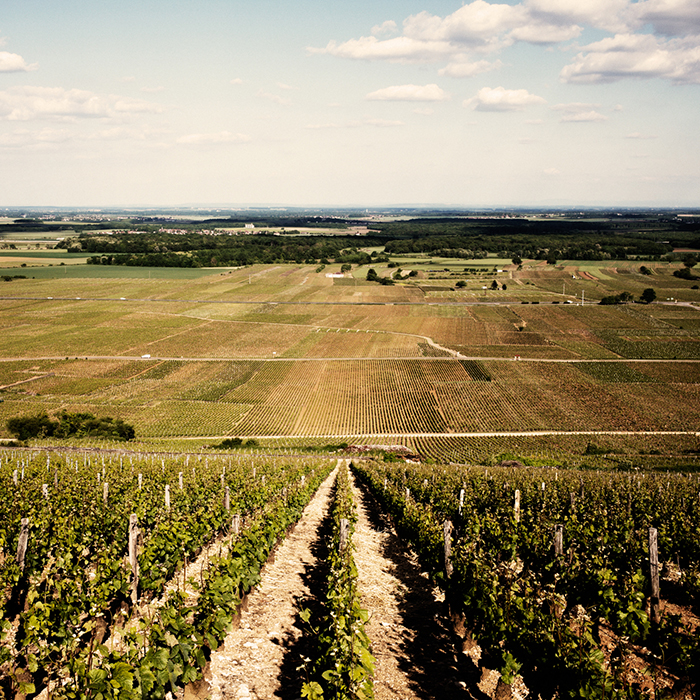A quick guide to Burgundy: Côte de Nuits
Author: Mark Pardoe MW

Gevrey-Chambertin
Produces: exclusively red wine
The most northerly of
the principal Burgundian wine villages, Gevrey-Chambertin has a reputation for powerful,
well-structured red wines. The wines from vineyards on the lower land come in a
range of styles from fruity to earthy for the generic wines, but high on the
hill there is often a spicy, racy character with a note of iron. The Premiers
Crus north of the town on the Côte St Jacques show great finesse, while those around
the Grands Crus display more density and muscle. Le Chambertin and Clos de Bèze
are supreme among the Grands Crus, incomparable for their power and perfume.
Morey-St Denis
Produces: mainly red with an occasional white wine
Morey is perhaps the least appreciated village of the Côte de Nuits. Here the limestone bedrock is often very close to the surface and, where that occurs, the wines will often show considerable vivacity and freshness under a taut frame. These wines can excel in a warmer vintage. Where the soil is deeper, the wines have some of the muscle of Gevrey allied to the floral scents of Chambolle. The village is famous for its Grands Crus, Clos de Tart and Clos des Lambrays, but Clos de la Roche is probably the pick and, where Premiers Crus adjoin, exceptional quality can be found.
Chambolle-Musigny
Produces: exclusively red wine
Perfume, delicacy, grace;
these are all impressions that set Chambolle apart from its neighbours. The
wines are not powerful and are often pale in colour. In fact, there are two
faces of Chambolle. On the northern border towards Morey, the wines are more robust
and can be a bit untamed, especially those of and around the Grand Cru Bonnes
Mares. To the south, the wines are lighter and more fragrant, ascending to the ineffable
majesty of Les Amoureuses and Le Musigny, whose haunting silky expressions are
the epitome of Chambolle’s individuality and sensuality.
Vougeot
Produces: exclusively red from Clos Vougeot, but lighter reds and some interesting whites from Vougeot
This village is dominated by its world-famous eponymous château and clos, a Grand Cru of significant size and of variation in its soils, with a bewildering number of plots and owners. One could generalise that Clos Vougeot is a solid, dense wine, strong in tannin, but much does depend on the producer and where the vines are situated. It is not accurate to simply propose that the vineyards higher on the slope are preferred. There are also some often-overlooked Premier Cru and village wines in Vougeot. These can have a crunchy and succulent character; while not hugely complex, they can be very tasty.
Vosne-Romanée
Produces: exclusively red wine
With its rollcall of legendary
Grands Crus and producers, Vosne-Romanée carries perhaps the most renown of all
the villages of the Côte de Nuits. At the top end, these are wines of
stratospheric reputation and price, with their trademarks of intensity,
richness and velvety refinement unmatched elsewhere. These characteristics can
also be detected in the best Premiers Crus, nestled in between the Grands Crus,
and the Premiers Crus higher on the slope can add a mineral tension to the mix.
The generic wines will often offer deliver exceptional quality for their
status.
Nuits-St Georges
Produces: mostly red but full-bodied whites are not uncommon
The last commune of the
Côte de Nuits has had a reputation for broad-shouldered, perhaps earthy reds. Today
that is certainly undeserved and there is now a range of distinctive styles. North
of the town of Nuits-St Georges, where the vineyards head towards Vosne-Romanée,
some of the gloss of its neighbour is detectable. South of the town on heavier
clay, richer wines are made, especially in and around the commune’s best
vineyard, Les St Georges. Further south still in Premeaux, there is a delicacy and
floral side to the wines, and several very good whites.
In part two, we travel south to the Côte de Beaune.
Burgundy’s 2018s will be offered en primeur in January; read all our coverage of the vintage here.


